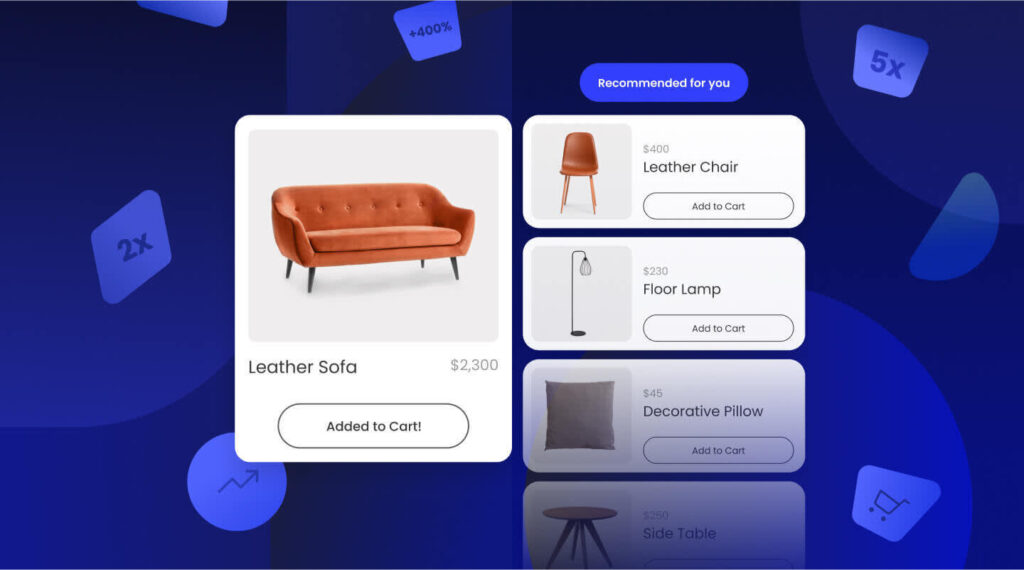Personalized recommendations have become a cornerstone of modern digital experiences, leveraging advanced AI models and frameworks to deliver highly relevant suggestions to users. These systems utilize various techniques, including recommendation systems, behavioral analysis, and generative AI, to enhance user engagement and satisfaction.
Recommendation Systems
Recommendation systems are algorithms designed to suggest products, services, or content to users based on their preferences and behaviors. These systems can be broadly categorized into three types:
1. Collaborative Filtering
Collaborative filtering analyzes user behavior and preferences to make recommendations. It can be further divided into:
- Memory-based Collaborative Filtering: This method relies on the entire user-item interaction matrix to make predictions. It identifies similar users or items and recommends based on these similarities.
- Model-based Collaborative Filtering: This approach uses machine learning models to predict user preferences. Techniques such as matrix factorization and neural networks are common in this category[2][5].
2. Content-based Filtering
Content-based filtering focuses on the attributes of items to make recommendations. It analyzes the features of items a user has interacted with and suggests similar items. For example, if a user likes a particular genre of movies, the system will recommend other movies in the same genre[2][3].
3. Hybrid Models
Hybrid recommendation systems combine collaborative and content-based filtering to leverage the strengths of both methods. This approach often yields more accurate and comprehensive recommendations. Companies like Netflix use hybrid models to enhance their recommendation accuracy[3][5].
Behavioral Analysis
Behavioral analysis involves tracking and analyzing user actions, such as clicks, searches, and purchase history, to understand their preferences and predict future behavior. This data is crucial for creating personalized recommendations. For instance, if a user frequently searches for and purchases baby products, the system can recommend related items like baby accessories or toys[3][5].
Generative AI
Generative AI represents a significant advancement in personalized recommendations. These models can generate new data points based on existing data, allowing for highly targeted suggestions. Generative AI analyzes vast amounts of customer data, including purchase history, browsing patterns, and explicit preferences, to create personalized marketing campaigns and product recommendations[3][4].
Real-world Applications
- Amazon: Utilizes generative AI to analyze customer data and deliver personalized product recommendations, significantly contributing to their sales.
- Spotify: Employs generative AI to curate personalized playlists based on user listening patterns.
- Wayfair: Uses image analysis and generative AI to recommend home decor items based on customer-uploaded photos[3].
Benefits of Personalized Recommendations
Personalized recommendations offer several benefits:
– Increased Engagement: Users are more likely to interact with content that is relevant to their interests.
– Higher Conversion Rates: Tailored suggestions can lead to higher purchase rates.
– Customer Satisfaction and Retention: Personalized experiences enhance user satisfaction and encourage repeat visits[2][3][5].
In conclusion, personalized recommendations powered by AI and machine learning are transforming how businesses interact with customers. By leveraging collaborative filtering, content-based filtering, and generative AI, companies can deliver highly relevant and engaging experiences that drive user satisfaction and business success.
Further Reading
1. Recommendations AI | AI 和机器学习产品 | Google Cloud
2. Why consider an AI recommendation system? | Algolia
3. Revolutionizing Retail with Generative AI: Personalized Recommendation
4. 使用生成式 AI 在电子商务应用中获取个性化推荐内容 | Spanner | Google Cloud
5. What are personalized recommendations? | Algolia | Algolia


